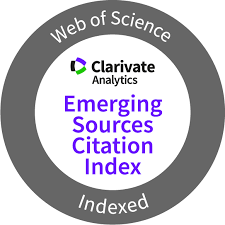Development and evaluation of technological alternatives to reduce the alcohol content and the pH of red wines
DOI:
https://doi.org/10.36561/ING.20.4Keywords:
Tannat, Pinot noir, Pre-fermentative hot maceration, Wine color, Wine compositionAbstract
The objective of this research was to develop and evaluate technologies that reduce the alcohol content and pH of Pinot noir and Tannat red wines without reduce their color and phenolic composition. To reduce wine alcohol content and pH, a partial substitution of the must of ripe grapes by must of unripe grapes was evaluated. Faced with a possible dilution effect when substituting must, a pre-fermentation hot maceration was additionally evaluated. Must substitution was an effective technique to reduce the alcohol content and the pH without modifying the phenolic concentration of wines made in both cultivars. Additionally, the pre-fermentation hot maceration increased the color of the wine and its concentration in total polyphenols, anthocyanins, catechins and proanthocyanins. The impact of both techniques was determined by the varietal characteristics and the ripening conditions, so it is necessary to continue adapting these techniques to different cultivars and in other growing situations. The development of these technologies is an interesting tool because they can be applied differentially according to the oenological potential of the grape in each harvest, mitigating the effects of climate change on its composition.
Downloads
References
OIV. Compendium of international: methods of analysis of wines and musts. Vol 1. 2018. Organisation Internationale de la Vigne et du Vin. Paris, France.
G. González-Neves, D. Charamelo, J. Balado, L. Barreiro, R. Bochicchio, G. Gatto, G. Gil, A. Tesore, A. Carbonneau, M. Moutounet. Phenolic potential of Tannat, Cabernet-Sauvignon and Merlot grapes and their correspondence with wine composition. Analytical Chimca Acta, 2004. 513:191–196
Y. Glories. La couleur des vins rouges. 2e. Partie : Mesure, origine et interprétation. Connaissance Vigne Vin, 1984. 18 (4): 253-271.
V. Singleton, J. Rossi. Colorimetry of total phenolics with phosphomolybdic and phosphotungstic acid reagents. American Journal of Enology and Viticulture, 1965. 16, 144–158.
P. Ribéreau-Gayon, E. Stonestreet. Le dosage des anthocyanes dans les vins rouges. Bulletin de la Société Chimique de France, 1965. 9, 2649–2653.
T. Swain, W. Hillis. The phenolic constituents of Prunus domestica. I. The quantitative analysis of phenolic constituents. Journal of Science and Food Agriculture, 1959. 10: 63-68.
P. Ribéreau-Gayon, E. Stonestreet. Dosage des tanins dans du vin rouge et détermination de leur structure. Chimie Analytique, 1966. 48, 188–196.
J.A. Di Rienzo, F. Casanoves, M.G.Balzarini, L. Gonzalez, M. Tablada, C.W Robledo. InfoStat versión 2015. Grupo InfoStat, FCA, Universidad Nacional de Córdoba, Argentina. URL http://www.infostat.com.ar
M. Ferrer, G. Echeverría, M. Miras-Avalos. Meteorological Conditions: Influence on Yield, Sanitary Status and Grape Composition. International Journal of Environmental & Agriculture Research, 2017.8 (3): 16-27.
D. Piccardo D, G. Favre, O. Pascual, J.M. Canals, F. Zamora, G. Gonzalez. Influence of the use of unripe grapes to reduce ethanol content and pH on the color, polyphenol and polysaccharide composition of conventional and hot macerated Pinot Noir and Tannat wines. European Food Research and Technology, 2019. 245 (6): 1321-1335.
D. Piccardo, Evaluación de distintas alternativas en la elaboración de vinos tintos de la variedad Tannat. Tesis de Maestría. 2015. Montevideo, Facultad de Agronomía, Uruguay.
N. Kontoudakis, M. Esteruelas, F. Fort, J.M. Canals, V. De Freitas, F. Zamora. Influence of the heterogeneity of grape phenolic maturity on wine composition and quality. Food Chemestry, 2011. 124: 67−774.
L. Rolle, V. Englezos, F. Torchio, F. Cravero, S. Río Segade, K. Rantsiou, S. Giacosa, A. Gambuti, V. Gerbi, L. Cocolin. Alcohol reduction in red wines by technological and microbiological approaches: A comparative study. Australian Journal of Grape Wine Research, 2018. 24 (1): 62-74.
F. He, N.N. Liang, L. Mu, Q.H. Pan, J. Wang, M.J. Reeves, C.Q. Duan. Anthocyanins and their variation in red wines I. Monomeric anthocyanins and their color expression. Molecules, 2012. 17:1571–1601.
Published
How to Cite
Issue
Section
License
Copyright (c) 2021 Diego Piccardo, Fernando Zamora, Gustavo González-Neves

This work is licensed under a Creative Commons Attribution 4.0 International License.






















